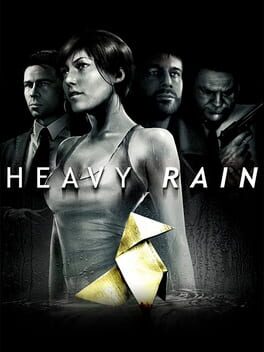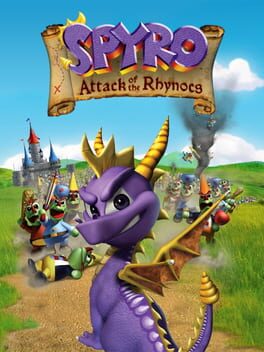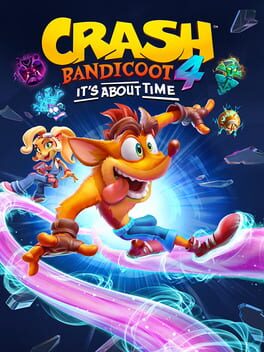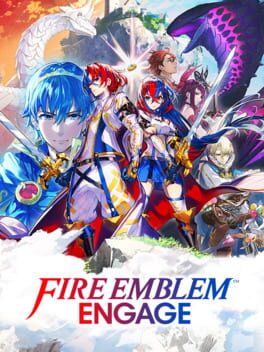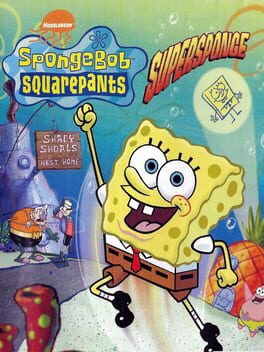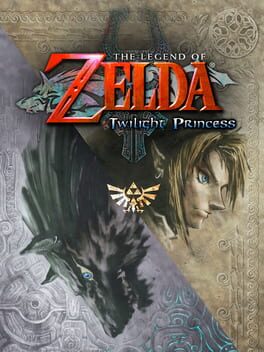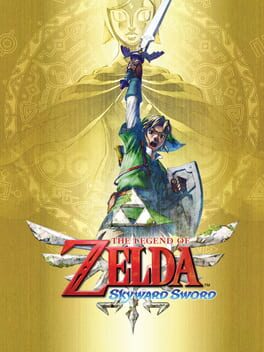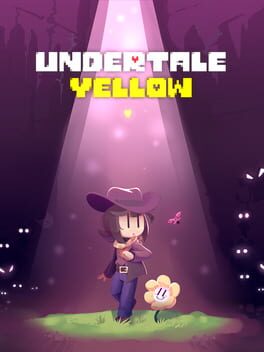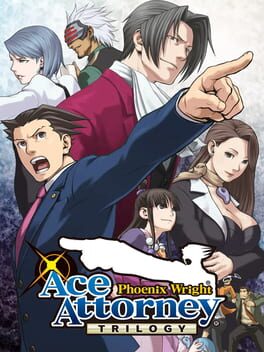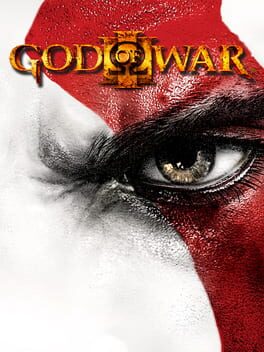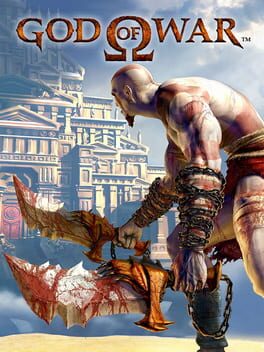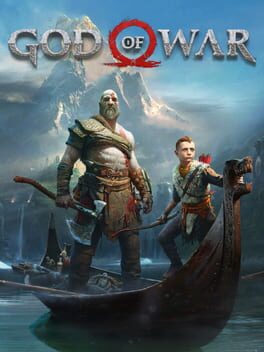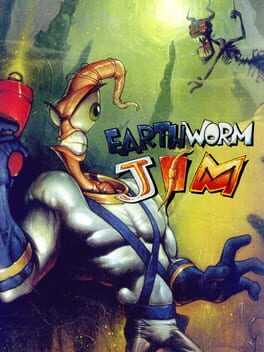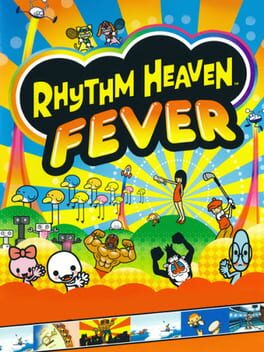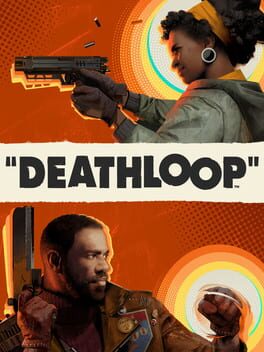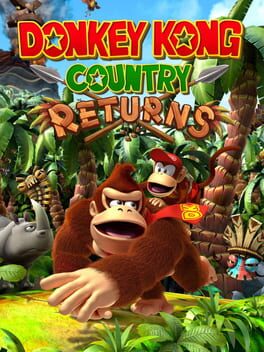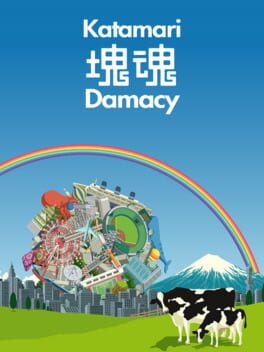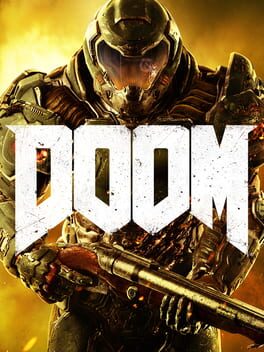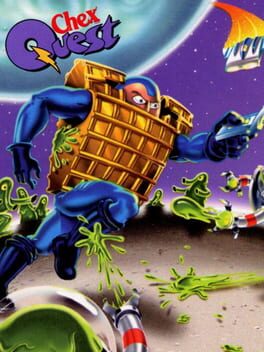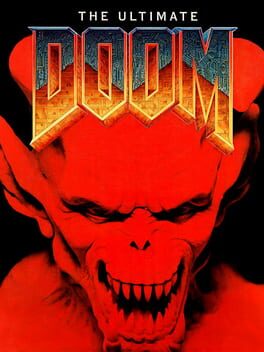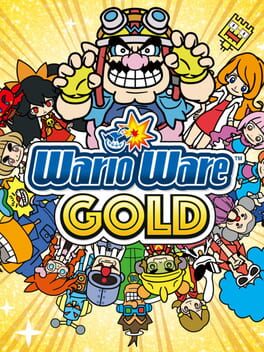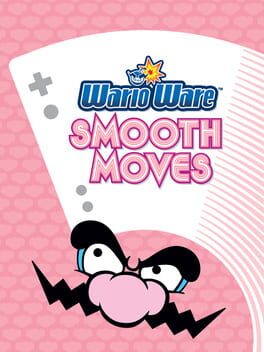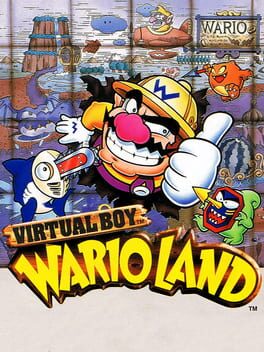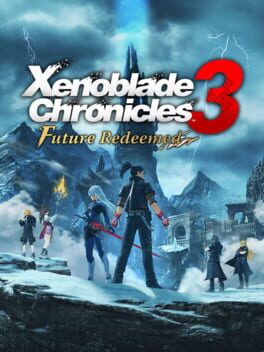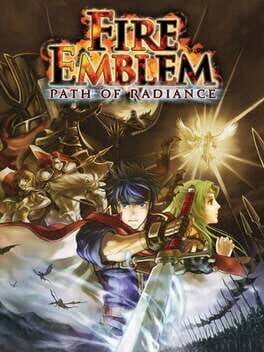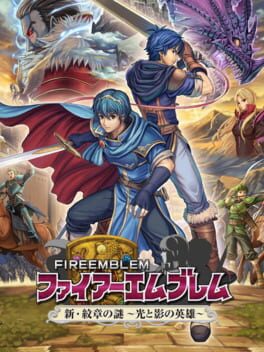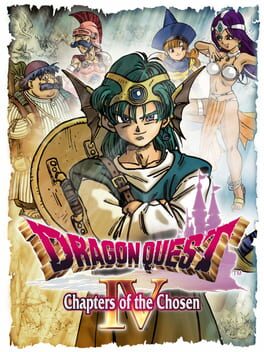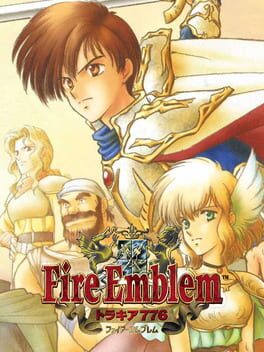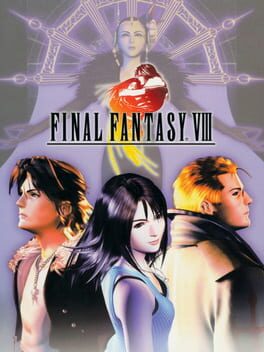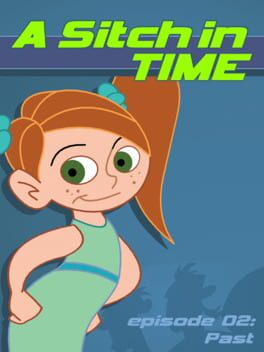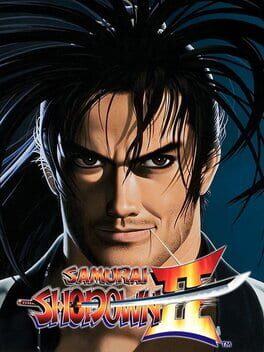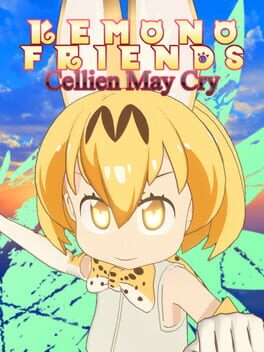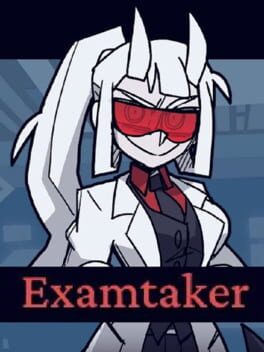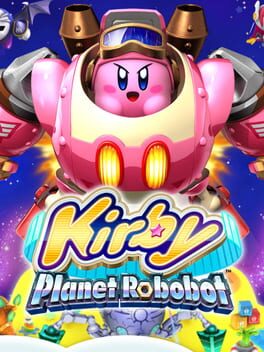Moonvale
99 reviews liked by Moonvale
Live A Live
2022
This one has been on my radar for years at this point: not only I know friends and people online that highly recommended as one of the most overlooked RPGs of the past generations, but also because... one of my favorite games ever is Octopath traveler 2. So it is kinda obvious that another HD2D twist on classic RPG formulas that talks about the journey of different protagonists is gonna peak my interest... and of course it's gonna be a point of comparison for me.
While Octopath is a collection of eight beautifully written journeys, Live-A-Live is a collection of beautifully written love letters. From the get-go, you can tell this is an incredible homage to various types of media, movie, game, that the developers were passionate about.
The game is about 8 different stories, all combined into a package that feels like an anthology of some sort: all the tales talk about a specific period in time, has unique gimmicks and presentation that makes them stand out from the others, making the game engaging from start to finish. Add to this the fact that most of these stories are full of secrets, optional interactions and even alternate endings and you got yourself a collection of nicely done tales that can be experienced over and over again, either for theunusual but surprising engaging battle system, the multiple paths available in each journey, or the bombastic soundtrack that will stuck in your head for days (every track in this game that uses a saxophone melted my ears).
Prehistory was an amazing start: a charming tale that is able to convey so much emotion even with the use of zero dialogues. Imagine the first half of Wall-E but the protagonist is a silly monkey man and his farty monkey friend. An excellent start and probably my second favorite of the all. Also has a really cool take on random RPG encounters and really adorable charm
Ancient china is a great homage to classic kung fu movies, and the way the chapter basically lets you start as a "Level 100 pokemon" that has to teach the way of kung fu to you level 10 disciples makes for a unique experience that is so fun to go through. An amazing twist from this story will stick with you for a bit, and honestly will make you reconsider your decisions in future playthoughs.
Distant Future is my favorite chapter in the game, and probably I will suggest to try this game just for this one. An amazing story that pays homage to science fiction while also turning into one of the best space adventure/horror games I have ever played.
My only major criticism with the game is something I will share with another Octopath comparison.
While Octopath Traveler is able to give an equal amount of time to each of their characters, and makes sure they all get an equal percentage of the game experience: each one of them has 4/5 chapters each, and each of them has similar amounts of boss fights, interactions, and key moments..... I don't think it the same can be said about the LIVE-A-LIVE stories. And this is especially clear if we consider the other 4 main stories.
Wild West is incredible: it nails the atmosphere, has amazing writing and it feels like a classic western movie from start to finish.... but it honestly feels to short: considering how much I like Sundown and the rest of the people he meets, I would not have mind if the game ets you do a bit more stuff during the night in the town, or maybe lets you explore a bit more of the desert or even fight more enemies before the final boss fight.
Present Day is similar: it's is an incredible street fighter reference: a Boss rush where you end up learning the moves of your foes and using them as weaknesses for other foes similar to a megaman game, only to end with a final confrontation with the local Akuma/M. Bison.... the thing is you can end up the game in less than 40 minutes..... I wish there was a bit more, either to add more personality to you protagonist, or even to add more fighting game references (maybe make thenumber of opponents 8 instead of 6, for a full homage to the world warriors... or maybe add some sub bosses similar to Vega or Balrog in Street fighter 2)
Near Future has almost the opposite problem for me: it is way to long, and decides to add layer over layer of gimmicks and stuff to a story that could have been way more straightforward: you got mind reading, gang fights, weird puzzles involving touching things to then sit on a toilet, turtles resurrected into robots, bird churches, mechas, plot twist, dead parents, evil corporations, selling meet, sick sisters, oprhanages, people juice or smt...... it is a lot, and I feel nothing gets used to its full potential, making a big mess of a chapter that almost feel like a big dream from the main character or smt. It's a reference to old anime tropes that I feel didn't age as well as the other chapters
Night of Edo Japan is controverstal: on one hand it is incredibly ambitious: many consider one of the major inspirations for Undertale, with an really cool gimmick of sparre/kill opponents and a stage that look linear but it is instead filled with secrets, optional routes, secret characters and bosses, and more. THere is a lot to this chapter... but it also makes some slip ups in terms of the level design: I feel like the game kinda punishes you for going full pacifist, and the way the game decides what enemy count as a kill or not makes the situation a bit confusing... not to mention that an act that can feel like the good moral route will result in a betrayal, as you are forced to kill the person that you helped, potentially making you restart a run.... and again the bigger lenght of this one doesn't help
SOmetime sI fell like the devs should have give an equal amount of time to all of the stories, as it feels like they put more tought into some of them and gave less attnetion to others. I feel like stories like Night of Edo and Near Future could have gained for being 10 minutes shorter, while stories like Wild West or Modern day would have turned out amazing if they were 10 minutes longer.
They are still all enjoyable and well written (except modern day to me eheh) and in general this doesn't not remove a lot of enjoyability from the whole game....... especially if you consider the secret chapter.
I will not say anything regarding the last chapter, unlocked after playing all the other stories, because I feel going blind is the best experience... but lemme just say that it is one of the best written tragedies ever written for a video game. AN absolute masterpiece that adds a twist to Classic RPG tales while also enhancing its own story, creating an endgame that basically elevates this game immensely as one of the best Square enix titles I have ever played. I will say I do have some issues with the ending of this game and how in some sense reminds me of "The Great Maze from Subspace": it can feel a bit too open and messy at times, but the journey is still worth it
This remake does the impossible: not only it is able to enhance everything about the original classic, with incredible remixes of the music and the beautiful implementation of HD2D graphic, but it is also adds one major thing at the end, something that allows to evolve and give justice to one of the protagonists of this 20+ year old story.
Without spoiling anything, imagine if someone today decides to re-write the Odyssey, one of the milestone of human literature, and adds to the ending something that not only gives justice, but is able to EVOLVE the character of Odysseus in the present day.... it may sound weird what I said but... if you know, you know :)))
If you haven't doen it already... play Live-A-Live. It is incredible how much people slept on this game for so long, and I am glad more people are giving it a shot.
Also Cube and Pogo are the best: the way these two acted at the end and interacted with "that one" made me absolutely cry.
While Octopath is a collection of eight beautifully written journeys, Live-A-Live is a collection of beautifully written love letters. From the get-go, you can tell this is an incredible homage to various types of media, movie, game, that the developers were passionate about.
The game is about 8 different stories, all combined into a package that feels like an anthology of some sort: all the tales talk about a specific period in time, has unique gimmicks and presentation that makes them stand out from the others, making the game engaging from start to finish. Add to this the fact that most of these stories are full of secrets, optional interactions and even alternate endings and you got yourself a collection of nicely done tales that can be experienced over and over again, either for theunusual but surprising engaging battle system, the multiple paths available in each journey, or the bombastic soundtrack that will stuck in your head for days (every track in this game that uses a saxophone melted my ears).
Prehistory was an amazing start: a charming tale that is able to convey so much emotion even with the use of zero dialogues. Imagine the first half of Wall-E but the protagonist is a silly monkey man and his farty monkey friend. An excellent start and probably my second favorite of the all. Also has a really cool take on random RPG encounters and really adorable charm
Ancient china is a great homage to classic kung fu movies, and the way the chapter basically lets you start as a "Level 100 pokemon" that has to teach the way of kung fu to you level 10 disciples makes for a unique experience that is so fun to go through. An amazing twist from this story will stick with you for a bit, and honestly will make you reconsider your decisions in future playthoughs.
Distant Future is my favorite chapter in the game, and probably I will suggest to try this game just for this one. An amazing story that pays homage to science fiction while also turning into one of the best space adventure/horror games I have ever played.
My only major criticism with the game is something I will share with another Octopath comparison.
While Octopath Traveler is able to give an equal amount of time to each of their characters, and makes sure they all get an equal percentage of the game experience: each one of them has 4/5 chapters each, and each of them has similar amounts of boss fights, interactions, and key moments..... I don't think it the same can be said about the LIVE-A-LIVE stories. And this is especially clear if we consider the other 4 main stories.
Wild West is incredible: it nails the atmosphere, has amazing writing and it feels like a classic western movie from start to finish.... but it honestly feels to short: considering how much I like Sundown and the rest of the people he meets, I would not have mind if the game ets you do a bit more stuff during the night in the town, or maybe lets you explore a bit more of the desert or even fight more enemies before the final boss fight.
Present Day is similar: it's is an incredible street fighter reference: a Boss rush where you end up learning the moves of your foes and using them as weaknesses for other foes similar to a megaman game, only to end with a final confrontation with the local Akuma/M. Bison.... the thing is you can end up the game in less than 40 minutes..... I wish there was a bit more, either to add more personality to you protagonist, or even to add more fighting game references (maybe make thenumber of opponents 8 instead of 6, for a full homage to the world warriors... or maybe add some sub bosses similar to Vega or Balrog in Street fighter 2)
Near Future has almost the opposite problem for me: it is way to long, and decides to add layer over layer of gimmicks and stuff to a story that could have been way more straightforward: you got mind reading, gang fights, weird puzzles involving touching things to then sit on a toilet, turtles resurrected into robots, bird churches, mechas, plot twist, dead parents, evil corporations, selling meet, sick sisters, oprhanages, people juice or smt...... it is a lot, and I feel nothing gets used to its full potential, making a big mess of a chapter that almost feel like a big dream from the main character or smt. It's a reference to old anime tropes that I feel didn't age as well as the other chapters
Night of Edo Japan is controverstal: on one hand it is incredibly ambitious: many consider one of the major inspirations for Undertale, with an really cool gimmick of sparre/kill opponents and a stage that look linear but it is instead filled with secrets, optional routes, secret characters and bosses, and more. THere is a lot to this chapter... but it also makes some slip ups in terms of the level design: I feel like the game kinda punishes you for going full pacifist, and the way the game decides what enemy count as a kill or not makes the situation a bit confusing... not to mention that an act that can feel like the good moral route will result in a betrayal, as you are forced to kill the person that you helped, potentially making you restart a run.... and again the bigger lenght of this one doesn't help
SOmetime sI fell like the devs should have give an equal amount of time to all of the stories, as it feels like they put more tought into some of them and gave less attnetion to others. I feel like stories like Night of Edo and Near Future could have gained for being 10 minutes shorter, while stories like Wild West or Modern day would have turned out amazing if they were 10 minutes longer.
They are still all enjoyable and well written (except modern day to me eheh) and in general this doesn't not remove a lot of enjoyability from the whole game....... especially if you consider the secret chapter.
I will not say anything regarding the last chapter, unlocked after playing all the other stories, because I feel going blind is the best experience... but lemme just say that it is one of the best written tragedies ever written for a video game. AN absolute masterpiece that adds a twist to Classic RPG tales while also enhancing its own story, creating an endgame that basically elevates this game immensely as one of the best Square enix titles I have ever played. I will say I do have some issues with the ending of this game and how in some sense reminds me of "The Great Maze from Subspace": it can feel a bit too open and messy at times, but the journey is still worth it
This remake does the impossible: not only it is able to enhance everything about the original classic, with incredible remixes of the music and the beautiful implementation of HD2D graphic, but it is also adds one major thing at the end, something that allows to evolve and give justice to one of the protagonists of this 20+ year old story.
Without spoiling anything, imagine if someone today decides to re-write the Odyssey, one of the milestone of human literature, and adds to the ending something that not only gives justice, but is able to EVOLVE the character of Odysseus in the present day.... it may sound weird what I said but... if you know, you know :)))
If you haven't doen it already... play Live-A-Live. It is incredible how much people slept on this game for so long, and I am glad more people are giving it a shot.
Also Cube and Pogo are the best: the way these two acted at the end and interacted with "that one" made me absolutely cry.
Heavy Rain
2010
A person lives three lives. The first ends with the loss of naïveté, the second with the loss of innocence, and the third with the loss of life itself. It is inevitable that we go through all three stages. In the second stage, we stop giving 5 stars rates. And in the third, a 4.5 stars rate becomes very rare.
Journey
2012
Journey can be said to exist almost without words. All story lines conveyed to the audiences appear in flash cut scenes that provide freedom of interpretation of what actually happened. Nevertheless, you can find a common thread, despite the various theories that may arise from it. You are seen playing the role of a red-robed explorer who seems to have one main goal which is to head to a mountain split by pillars of light in the distance. As if trying to find answers to what really happened to all the civilizations you pass through, mysteries emerge from every corner. The encounter of the character you use with a similar figure but in white clothes seems to imply the theme of enlightenment and self-discovery which seems to be the identity of Journey.
In terms of gameplay, Journey can be said to be very simple. I would categorize it as a platformer/adventure game, with the classic goal which is getting from point A to point B. Implementing a bit of an open world element in it, the world is offered in a fairly open format. Journey clearly makes exploration the foundation of its gameplay. It is more focused on finding a way to get to the next place, with challenges generally rooted in position, puzzle sequences, or the limitations of the main character you use yourself. At some points in the game you have to face aggressive enemies, but you are still in a "peaceful" position. Avoidance is the only way to continue living.
Your main character, also known as "The Traveler", comes with several standard main movements, of course apart from walking through various terrains. He can jump, and can also whistle weakly or strongly as a means of communication and a solution to existing puzzles. However, The Traveler himself is only able to execute one of these movements in a limited number of times. You can whistle as freely as you want, but your jumping ability will be very limited. The main indicator is a scarf that flutters every time you move. Each jump will consume some of the patterns on the eye-pleasing fabric, which, when used up, will eliminate your jumping ability which also means, loss of access to higher ground.
Journey also offers a fantastic world for the audiences to enjoy, not only from the visual side, but also audio. During the trip while you explore, you will also enjoy beautiful and stunning views. Whether you see the small sand tunnel that is created every time the Traveler slides over it, or when the cold snow starts to make your clothes turn white and look heavy, or simply because of the effect of light that appears from the sun at the end of the horizon that refuses to sink. Each of these moments felt extraordinary. It is also supported by soundtracks that is no less evocative. Your journey through so many exotic places with amazing designs seems to be enhanced by the music that accompanies your every small step.
The dreamy vibe and ‘show don’t tell’ approach are also present in the character animations, which I absolutely need to highlight. The living pieces of fabric all wave in the air representing a certain type of animal and the overall animations that come with crossing the extreme surroundings convey a certain weight to the player. Slowly pushing yourself through a snowstorm while your thumbstick says full force forward, or gently letting yourself turn from right to left when sliding down the loose sand of a dune, it all feels very convincing and natural.
At first glance, Journey might look like an experimental project that has the potential to be boring because of the lack of action. But once you start playing it, once you become a Traveler, as soon as your feet step on the first sand of your desert, you can feel the magical power that radiates from this game. It is a wonderful experience that feels as a breather between all the competitive, complex and story-driven games that require the fullest of your attention.
In terms of gameplay, Journey can be said to be very simple. I would categorize it as a platformer/adventure game, with the classic goal which is getting from point A to point B. Implementing a bit of an open world element in it, the world is offered in a fairly open format. Journey clearly makes exploration the foundation of its gameplay. It is more focused on finding a way to get to the next place, with challenges generally rooted in position, puzzle sequences, or the limitations of the main character you use yourself. At some points in the game you have to face aggressive enemies, but you are still in a "peaceful" position. Avoidance is the only way to continue living.
Your main character, also known as "The Traveler", comes with several standard main movements, of course apart from walking through various terrains. He can jump, and can also whistle weakly or strongly as a means of communication and a solution to existing puzzles. However, The Traveler himself is only able to execute one of these movements in a limited number of times. You can whistle as freely as you want, but your jumping ability will be very limited. The main indicator is a scarf that flutters every time you move. Each jump will consume some of the patterns on the eye-pleasing fabric, which, when used up, will eliminate your jumping ability which also means, loss of access to higher ground.
Journey also offers a fantastic world for the audiences to enjoy, not only from the visual side, but also audio. During the trip while you explore, you will also enjoy beautiful and stunning views. Whether you see the small sand tunnel that is created every time the Traveler slides over it, or when the cold snow starts to make your clothes turn white and look heavy, or simply because of the effect of light that appears from the sun at the end of the horizon that refuses to sink. Each of these moments felt extraordinary. It is also supported by soundtracks that is no less evocative. Your journey through so many exotic places with amazing designs seems to be enhanced by the music that accompanies your every small step.
The dreamy vibe and ‘show don’t tell’ approach are also present in the character animations, which I absolutely need to highlight. The living pieces of fabric all wave in the air representing a certain type of animal and the overall animations that come with crossing the extreme surroundings convey a certain weight to the player. Slowly pushing yourself through a snowstorm while your thumbstick says full force forward, or gently letting yourself turn from right to left when sliding down the loose sand of a dune, it all feels very convincing and natural.
At first glance, Journey might look like an experimental project that has the potential to be boring because of the lack of action. But once you start playing it, once you become a Traveler, as soon as your feet step on the first sand of your desert, you can feel the magical power that radiates from this game. It is a wonderful experience that feels as a breather between all the competitive, complex and story-driven games that require the fullest of your attention.
This review contains spoilers
Initially, I tried to play Trails into Reverie (or Hajimari no Kiseki) in 2021 on the Japanese version with the fan translation, but I just couldn't do it, so I dropped the game halfway through, waiting for the English release, and this did not disappoint at all. This game truly is the 'everybody is here' of Trails (well, except most of the Liberl crew). This game is like The 3rd to the Crossbell and Cold Steel arcs, wrapping up the loose ends, and essentially going through the events in the slideshow at the end of Cold Steel 4. There's a lot of heavy plot and this game is actually peak gaming.
The story is split into three routes: Lloyd Route, Rean Route, and C Route. I'll give a section to each route but for right now I will state my thoughts on the overarching story. The main antagonist once again not really being a living being, and instead an AI that can predict the future and alter the course of history was something I was not expecting. Having one of the new characters represent this antagonist, Lapis, was great, and they did the best they possibly could with her through the C route and the entire finale section, but I hope they get to expand on her more in later games because she's really interesting (y'know, for being a Rosenburg Doll and all). Rufus fully embracing his 'villain' is amazing, and he honestly grew a lot on me. Obviously, I still hate him for the scum he was in CS3 and CS4, but I'm interested to see where they take his character from here on. The fact that Rufus is apparently 'dead' to everyone that wasn't involved in the operation is kind of crazy, and of course we got a cheesy Lloyd speech to boot, but you gotta love the cheesy Lloyd speeches. I will admit, having Ishmelga (well Ishmelga Rean) again in the game kinda annoyed me because I thought we got rid of it for good, but I didn't mind as much considering it ended Rean's character arc nicely. And the fact they denied Ishmelga's warning for the world 'ending' in three years was kinda dope, putting humanity into humanities own hands. With all that said, I just wanna talk about the routes very briefly.
Lloyd Route. I won't mince words, this is the worst route in the game. It isn't bad, I actually quite enjoyed it, but it literally is the entire plot of Azure's finale. Going around Crossbell after the group has been separated due to 'Rufus' taking over Crossbell right before their independence is signed seems EERILY similar. I don't think I hate this route as much as others because I was just so excited to have the Crossbell cast interact with each other again and go on their various escapades to somehow snatch Crossbell back.
I just love Rean, and his route. The fact we get to go back to Ymir and Nord Highlands was great. Dealing with Calvardian agents, and the Arios simulacra fight is kind of peak. Coupled with a goofy Mischneider boss fight in Mishelam, and I just liked seeing the group do their thing. Rescuing the imperial couple on their honeymoon is something I enjoyed, but one slight dash I will hold against Rean's route is the fact that it introduces so much. The disappearance of Olivier and Scherazard on their honeymoon, Traitors in Imperial Army supporting the EDFs reoccupation of Crossbell, Simulacras, and then the end of the route is Rean meeting Ishmelga Rean and then merging with the Lloyd and C routes. It's a lot to take in, but despite that, I loved the hell out of it.
C's route is great. You get to play as four new characters (technically three, but Rufus is also a new one in my books). Accompanied by Duvalie, Renne, and Arios, and this route has A LOT of diversity and fun. The dynamics between Renne, Nadia, and Lapis are impeccable and the duel between Rufus and Duvalie is so silly I love it so much. Arguably the weakest character in the route is probably Arios, so its alright. Having read 3 & 9 prior to Reverie, I liked how Swin and Nadia had to rehash their past and fight Emperor, not once, but TWICE (and not even being the real one because he was already dead). Lapis having an identity crisis, but being saved by Rufus (through a tracker) was kind of hilarious to watch and just made me love the duo a lot. I loved the constant switching between C and Rean's Routes in Heimdallr as they were at eachothers throats, it was so jam-packed having to constantly fight the party we were just using with the other.
I've said a lot about the characters in the route sections because this story is especially character driven, but Nadia, Rufus, and Lapis are highlights. That Nadia section in Heimdallr was especially unsettling when she was talking about torturing the guy whilst stabbing knives into her stuffed bear. Rufus having to atone for his sins by staying alive is probably the best punishment he could've gotten, and being off-the-record gives him the chance to explore the world with the people that care about him the most (I love how the Imperial Picknicking Front act like a little family, it's really endearing). I NEED TO KNOW MORE ABOUT THOSE FINAL THREE DAYDREAMS (and the Ouroboros one with the Calvardian President). Who is Elaine? Why is Renne a girlboss? There's really someone that can cut Rean's tachi, a Divine Blades at that, in half? I have so many questions and they've honestly made me super super excited for Daybreak.
Speaking of Daydreams, I enjoyed them a lot. Getting to experience a little slice of life in the middle of the story was a nice change of pace, and the way they reminded me of the Doors from the 3rd was great because I loved the doors. My favourite daydreams were definitely the Cedric, Towa, Emma, and the Calvardian daydreams.
Besides the regular battle system, which was just beyond busted, most of the gameplay in Reverie is centered around the Reverie Corridor, akin to the Recluse Cube in The 3rd, except that's story on top of the Reverie Corridor. Randomly generated dungeons aside (I hate them), I loved getting to use my favourite characters in more combat (Wazy was so fun to nuke everything with using his S-Craft and arts). The various events in the corridor were fun (a little bit tedious though). Can't talk about Reverie Corridor without mentioning the gacha, it honestly isn't that bad. Getting some busted quartz and accessories was fun (coming from a gacha gamer), as well as the various Corridor characters and daydreams. I liked seeing the characters interact with people they wouldn't normally in the Corridor, like how we finally got to see the two dominions of the previous two arcs, Wazy and Gaius, finally interact. Talking about the final boss in the game, Demiourgos. It was extremely surprising that the final boss was actually a Sept-Terrion (and the Sept-Terrion of Mirage at that). I don't have anything to say about that boss fight because I just built a bunch of nukes so it wasn't that big of a problem. One boss that I definitely did have a problem with was the magic knight in Rean's route. Having to beat that thing on Nightmare difficulty with limited resources, right after a boss fight that had an extremely strict turn limit was screwed up, but I somehow managed to scrape by.
I will keep saying it, Trails has peak music. Reverie is not exception. Slight Suspicion, Mischneider Theme, Beyond the Reverie, Stand Up Again and Again, and many more are absolute bangers and made it onto my playlist.
Overall, I loved Reverie and it has gotten me so pumped for Daybreak releasing in just a few days. This series continues to be peak and I cannot wait to start a new arc in a new part of Zemuria!
The story is split into three routes: Lloyd Route, Rean Route, and C Route. I'll give a section to each route but for right now I will state my thoughts on the overarching story. The main antagonist once again not really being a living being, and instead an AI that can predict the future and alter the course of history was something I was not expecting. Having one of the new characters represent this antagonist, Lapis, was great, and they did the best they possibly could with her through the C route and the entire finale section, but I hope they get to expand on her more in later games because she's really interesting (y'know, for being a Rosenburg Doll and all). Rufus fully embracing his 'villain' is amazing, and he honestly grew a lot on me. Obviously, I still hate him for the scum he was in CS3 and CS4, but I'm interested to see where they take his character from here on. The fact that Rufus is apparently 'dead' to everyone that wasn't involved in the operation is kind of crazy, and of course we got a cheesy Lloyd speech to boot, but you gotta love the cheesy Lloyd speeches. I will admit, having Ishmelga (well Ishmelga Rean) again in the game kinda annoyed me because I thought we got rid of it for good, but I didn't mind as much considering it ended Rean's character arc nicely. And the fact they denied Ishmelga's warning for the world 'ending' in three years was kinda dope, putting humanity into humanities own hands. With all that said, I just wanna talk about the routes very briefly.
Lloyd Route. I won't mince words, this is the worst route in the game. It isn't bad, I actually quite enjoyed it, but it literally is the entire plot of Azure's finale. Going around Crossbell after the group has been separated due to 'Rufus' taking over Crossbell right before their independence is signed seems EERILY similar. I don't think I hate this route as much as others because I was just so excited to have the Crossbell cast interact with each other again and go on their various escapades to somehow snatch Crossbell back.
I just love Rean, and his route. The fact we get to go back to Ymir and Nord Highlands was great. Dealing with Calvardian agents, and the Arios simulacra fight is kind of peak. Coupled with a goofy Mischneider boss fight in Mishelam, and I just liked seeing the group do their thing. Rescuing the imperial couple on their honeymoon is something I enjoyed, but one slight dash I will hold against Rean's route is the fact that it introduces so much. The disappearance of Olivier and Scherazard on their honeymoon, Traitors in Imperial Army supporting the EDFs reoccupation of Crossbell, Simulacras, and then the end of the route is Rean meeting Ishmelga Rean and then merging with the Lloyd and C routes. It's a lot to take in, but despite that, I loved the hell out of it.
C's route is great. You get to play as four new characters (technically three, but Rufus is also a new one in my books). Accompanied by Duvalie, Renne, and Arios, and this route has A LOT of diversity and fun. The dynamics between Renne, Nadia, and Lapis are impeccable and the duel between Rufus and Duvalie is so silly I love it so much. Arguably the weakest character in the route is probably Arios, so its alright. Having read 3 & 9 prior to Reverie, I liked how Swin and Nadia had to rehash their past and fight Emperor, not once, but TWICE (and not even being the real one because he was already dead). Lapis having an identity crisis, but being saved by Rufus (through a tracker) was kind of hilarious to watch and just made me love the duo a lot. I loved the constant switching between C and Rean's Routes in Heimdallr as they were at eachothers throats, it was so jam-packed having to constantly fight the party we were just using with the other.
I've said a lot about the characters in the route sections because this story is especially character driven, but Nadia, Rufus, and Lapis are highlights. That Nadia section in Heimdallr was especially unsettling when she was talking about torturing the guy whilst stabbing knives into her stuffed bear. Rufus having to atone for his sins by staying alive is probably the best punishment he could've gotten, and being off-the-record gives him the chance to explore the world with the people that care about him the most (I love how the Imperial Picknicking Front act like a little family, it's really endearing). I NEED TO KNOW MORE ABOUT THOSE FINAL THREE DAYDREAMS (and the Ouroboros one with the Calvardian President). Who is Elaine? Why is Renne a girlboss? There's really someone that can cut Rean's tachi, a Divine Blades at that, in half? I have so many questions and they've honestly made me super super excited for Daybreak.
Speaking of Daydreams, I enjoyed them a lot. Getting to experience a little slice of life in the middle of the story was a nice change of pace, and the way they reminded me of the Doors from the 3rd was great because I loved the doors. My favourite daydreams were definitely the Cedric, Towa, Emma, and the Calvardian daydreams.
Besides the regular battle system, which was just beyond busted, most of the gameplay in Reverie is centered around the Reverie Corridor, akin to the Recluse Cube in The 3rd, except that's story on top of the Reverie Corridor. Randomly generated dungeons aside (I hate them), I loved getting to use my favourite characters in more combat (Wazy was so fun to nuke everything with using his S-Craft and arts). The various events in the corridor were fun (a little bit tedious though). Can't talk about Reverie Corridor without mentioning the gacha, it honestly isn't that bad. Getting some busted quartz and accessories was fun (coming from a gacha gamer), as well as the various Corridor characters and daydreams. I liked seeing the characters interact with people they wouldn't normally in the Corridor, like how we finally got to see the two dominions of the previous two arcs, Wazy and Gaius, finally interact. Talking about the final boss in the game, Demiourgos. It was extremely surprising that the final boss was actually a Sept-Terrion (and the Sept-Terrion of Mirage at that). I don't have anything to say about that boss fight because I just built a bunch of nukes so it wasn't that big of a problem. One boss that I definitely did have a problem with was the magic knight in Rean's route. Having to beat that thing on Nightmare difficulty with limited resources, right after a boss fight that had an extremely strict turn limit was screwed up, but I somehow managed to scrape by.
I will keep saying it, Trails has peak music. Reverie is not exception. Slight Suspicion, Mischneider Theme, Beyond the Reverie, Stand Up Again and Again, and many more are absolute bangers and made it onto my playlist.
Overall, I loved Reverie and it has gotten me so pumped for Daybreak releasing in just a few days. This series continues to be peak and I cannot wait to start a new arc in a new part of Zemuria!
Elden Ring
2022
Remember how Breath of the Wild didn't just put Twilight Princess Link in an open world? Well...
Elden Ring's open world does not complement its still-unchaged-since-Demon's Souls mechanics -- if you thought it was too easy to run past janky AI fodder in Dark Souls 2, wait until you see the exact same shit in a gigantic flat wasteland that will only become more cumbersome to play through with every fresh save file.
It's peak when FromSoft are in their bag though, Leyndell is the type of shit where you can't help but be in disbelief that it was somehow created by humans. The power fantasy provided by my shameless quadruple Katana build did wear thin by the end, but the Souls take on action-RPG mechanics has always stood out to me for its actually fucking bearable blend of intuitive while still open-ended progression with a consistent sense of real discovery rather than the interchangeable loot/skill tree hell of so many other games. Big Dragon Quest energy on this one.
Elden Ring's open world does not complement its still-unchaged-since-Demon's Souls mechanics -- if you thought it was too easy to run past janky AI fodder in Dark Souls 2, wait until you see the exact same shit in a gigantic flat wasteland that will only become more cumbersome to play through with every fresh save file.
It's peak when FromSoft are in their bag though, Leyndell is the type of shit where you can't help but be in disbelief that it was somehow created by humans. The power fantasy provided by my shameless quadruple Katana build did wear thin by the end, but the Souls take on action-RPG mechanics has always stood out to me for its actually fucking bearable blend of intuitive while still open-ended progression with a consistent sense of real discovery rather than the interchangeable loot/skill tree hell of so many other games. Big Dragon Quest energy on this one.
Fire Emblem Engage
2023
Fire Emblem Engage was a welcome surprise for me. On one hand, it has arguably the best gameplay in the entire series, but to balance this, it probably has one of the most cliche and basic stories in the entire series.
To begin with, the story isn’t that good. It’s a bunch of tropes meshed into one and it’s just really boring. It’s not bad, just not good either. There’s really not much else to say without getting spoilery but that’s my thoughts on the story.
I enjoyed a lot of the cast. Yes, a few of them can be annoying at times like Clanne, Framme, and Alfred, but some were pleasantly enjoyable. I didn’t expect to enjoy Goldmary as much as I did, and her support conversations with various units (including Ike) just made me laugh. I also enjoyed Kagetsu, Ivy, Fogado, and Timerra. I liked how units also had support conversations with the different emblems, and you got some pretty funny lines from certain conversations, and some callbacks from others.
In contrast to the story, the gameplay is kind of peak. Emblem rings, engaging, and the break system are all welcome additions to the series (albeit some of these things are kind of busted). Having the weapon triangle back in the form of the break system is great and it honestly makes gameplay a lot more strategical to prevent enemies from being able to counterattack. Like Three Houses, the game is more lenient with class variation, but it is just more worth it to stay in their base class, or one with a similar role (unless your Anna). I find using Backup units hilarious, seeing the battle menu say that 6 allies will do 4 damage to the enemy, a really great addition imo, even though it sounds and plays really stupidly because you can just make an entire army of backup units. Emblem abilities are kinda bonkers and can really turn the tide of battle into your favour, and I love how enemy units can also use these emblem abilities, and you need to find the correct strategy to neutralise them as quickly as possible, with as little damage as possible. One great thing about emblem rings was that you’re able to pass down special abilities to any unit. You can essentially have your entire army, including your mages and your dancer, have Canter, allowing them to retreat after initiating combat. Overall, I had a lot of fun with the gameplay in this game, and probably one of my most enjoyable fire emblem experiences.
However, I am kind of tired of a main hub. The Somniel is as tedious as the Monastery (I probably enjoyed the Monastery more because I liked it conceptually). The Somniel just seemed out of place and was only made because Three Houses did so well? Don’t get me wrong, I enjoy both Three Houses and Engage, and I don’t mind either the Somniel or the Monastery, but having to go through so much after each chapter, especially on a replay is sort of tiring. At least this game has dogs that you can get silver ingots from.
Being able to explore each map after a battle and pick up items and adopt pets was something I also enjoyed. Though it did start to get boring when some characters started having the same dialogue in different maps.
I played the game on Hard difficulty until the very end of the game, where I switched it to normal because of never-ending reinforcements (definitely a skill issue and me turtling too much). The maps in general were really enjoyable (Chapter 13 and 17 made me want to cry though because of how many resets I did, I think Chapter 13 took an entire day because I was making so many stupid mistakes). Albeit, this was my first FE game on a higher difficulty than the lowest. Chapters 17 (despite how painful), and 11 were probably my favourite maps because of the retreat condition and the amount of bosses present that just felt really really epic. I also really enjoyed the Paralogues being a callback to the emblem rings original games. You get maps like Arena Ferox and the Plains of Hoshido that are iconic to their respective games (they did Lyn dirty giving her a map that wasn’t even from her original game). These were a lot of fun of challenge, especially the Sigurd one with all of the units that appear in the end.
The music in this game slapped, especially the Solm music, it just slapped harder on a different level compared to the rest of the game. The art style is also great, but I will say some character designs are extremely questionable. Why did we need Colgate-kun as the protagonist, or for Celine to have a macaron for a dress. But other characters had some pretty killer designs like Ivy and Timerra.
Overall, a great game that you should only play for the gameplay and not the story.
Also, please save me from all of the marriage and divorce puns, I’m so done with them.
To begin with, the story isn’t that good. It’s a bunch of tropes meshed into one and it’s just really boring. It’s not bad, just not good either. There’s really not much else to say without getting spoilery but that’s my thoughts on the story.
I enjoyed a lot of the cast. Yes, a few of them can be annoying at times like Clanne, Framme, and Alfred, but some were pleasantly enjoyable. I didn’t expect to enjoy Goldmary as much as I did, and her support conversations with various units (including Ike) just made me laugh. I also enjoyed Kagetsu, Ivy, Fogado, and Timerra. I liked how units also had support conversations with the different emblems, and you got some pretty funny lines from certain conversations, and some callbacks from others.
In contrast to the story, the gameplay is kind of peak. Emblem rings, engaging, and the break system are all welcome additions to the series (albeit some of these things are kind of busted). Having the weapon triangle back in the form of the break system is great and it honestly makes gameplay a lot more strategical to prevent enemies from being able to counterattack. Like Three Houses, the game is more lenient with class variation, but it is just more worth it to stay in their base class, or one with a similar role (unless your Anna). I find using Backup units hilarious, seeing the battle menu say that 6 allies will do 4 damage to the enemy, a really great addition imo, even though it sounds and plays really stupidly because you can just make an entire army of backup units. Emblem abilities are kinda bonkers and can really turn the tide of battle into your favour, and I love how enemy units can also use these emblem abilities, and you need to find the correct strategy to neutralise them as quickly as possible, with as little damage as possible. One great thing about emblem rings was that you’re able to pass down special abilities to any unit. You can essentially have your entire army, including your mages and your dancer, have Canter, allowing them to retreat after initiating combat. Overall, I had a lot of fun with the gameplay in this game, and probably one of my most enjoyable fire emblem experiences.
However, I am kind of tired of a main hub. The Somniel is as tedious as the Monastery (I probably enjoyed the Monastery more because I liked it conceptually). The Somniel just seemed out of place and was only made because Three Houses did so well? Don’t get me wrong, I enjoy both Three Houses and Engage, and I don’t mind either the Somniel or the Monastery, but having to go through so much after each chapter, especially on a replay is sort of tiring. At least this game has dogs that you can get silver ingots from.
Being able to explore each map after a battle and pick up items and adopt pets was something I also enjoyed. Though it did start to get boring when some characters started having the same dialogue in different maps.
I played the game on Hard difficulty until the very end of the game, where I switched it to normal because of never-ending reinforcements (definitely a skill issue and me turtling too much). The maps in general were really enjoyable (Chapter 13 and 17 made me want to cry though because of how many resets I did, I think Chapter 13 took an entire day because I was making so many stupid mistakes). Albeit, this was my first FE game on a higher difficulty than the lowest. Chapters 17 (despite how painful), and 11 were probably my favourite maps because of the retreat condition and the amount of bosses present that just felt really really epic. I also really enjoyed the Paralogues being a callback to the emblem rings original games. You get maps like Arena Ferox and the Plains of Hoshido that are iconic to their respective games (they did Lyn dirty giving her a map that wasn’t even from her original game). These were a lot of fun of challenge, especially the Sigurd one with all of the units that appear in the end.
The music in this game slapped, especially the Solm music, it just slapped harder on a different level compared to the rest of the game. The art style is also great, but I will say some character designs are extremely questionable. Why did we need Colgate-kun as the protagonist, or for Celine to have a macaron for a dress. But other characters had some pretty killer designs like Ivy and Timerra.
Overall, a great game that you should only play for the gameplay and not the story.
Also, please save me from all of the marriage and divorce puns, I’m so done with them.
As a kid I was never able to beat the 2nd level Sandy's Treedome. I continued to get hit and backtrack my way through the level worried I was going to lose all my lives. Turns out you can just brute force your way through everything. Walking through all enemies just picking up spatulas to keep you alive since they operate the same way as Sonic's rings.
The nicest thing I can say here is that it's painless and the awkward moments are really funny. Did you know the queen jellyfish is afraid of jellyfish? Also that they reside in Jelly Field?
Characters look horrible, everything is too close together and platforming is incredibly stiff. Childhood me would be proud that I beat it, but adult me feels like I wasted my time.
The nicest thing I can say here is that it's painless and the awkward moments are really funny. Did you know the queen jellyfish is afraid of jellyfish? Also that they reside in Jelly Field?
Characters look horrible, everything is too close together and platforming is incredibly stiff. Childhood me would be proud that I beat it, but adult me feels like I wasted my time.
9 lists liked by Moonvale
by KatietheSqurge |
20 Games
by Zguvat |
8 Games
by Blodyssey3004 |
60 Games
by VSLazer |
14 Games
by Blodyssey3004 |
6 Games
by Blodyssey3004 |
7 Games
by spiderfreak1011 |
12 Games
by BigGnome |
25 Games
by LoreW001 |
7764 Games

